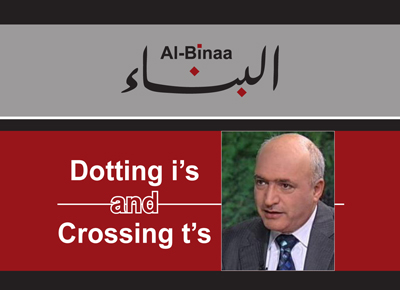
February 11, 2025
Nasser Kandil
• Let us imagine a Middle East where the Shah’s regime still rules Iran – where the Islamic Revolution never took place. In this alternate reality, how different would the region and the world be? One immediate consequence would be the loss of a key pillar in American and Israeli political discourse, which for the past two decades has framed Iran as the primary challenge and a strategic threat. U.S. and Israeli policies and alliances in the region have largely revolved around hostility toward Iran, with media narratives serving a central function: demonising Iran. This approach echoes the 1950s and 1960s, when Western powers waged a propaganda and political war against Gamal Abdel Nasser, forming military alliances to contain him, mobilising the media to discredit him and his vision, and ultimately seeking to overthrow his government and defeat his army.
• Conversely, if we envision the region without revolutionary Iran, we find ourselves without the strategic depth that has supported resistance forces against American occupation in Iraq and Afghanistan, and against Israeli occupation in Lebanon and Palestine. It is difficult to imagine that the resistance movements could have achieved their current level of strength without this depth – strength that enabled the liberation of South Lebanon and Gaza, culminating in Operation Al-Aqsa Flood. This Axis of Resistance, which extends beyond Lebanon and Palestine to include Iraq and Yemen, set the stage for a historic confrontation between this front and the U.S.-Israeli alliance – the longest the region has known – where the U.S.-Israeli alliance deployed its utmost levels of brutality and criminality and expended their surplus power in vain; their efforts ended with a resounding failure for Washington and Tel Aviv. The United States was defeated in the Red Sea by Yemen, while Israel failed to impose occupation and mass displacement in Gaza and Lebanon, unable to eliminate the resistance forces. The era of resolving the Palestinian cause through military force came to an end. Once sidelined, the Palestinian cause returned to the forefront of Arab, Islamic, and global agendas, with a dramatic shift in international public opinion – one that increasingly favours Palestine and turns against Israel. All of this was made possible by the resistance, in which Iran played an enduring role in fostering strength and resilience, often at great cost.
• Iran and its Islamic Revolution have stood as a model of unwavering commitment to national sovereignty, enduring decades of challenges to uphold this principle. Likewise, Iran has remained steadfast in its support for the Palestinian cause, bearing immense burdens as a result. Yet, despite relentless pressure, Iran has not only survived but strengthened its position, steadily increasing its influence in the region and the world. It successfully avoided falling into a trap with Israel and America for a catastrophic war akin to the 1967 conflict. Iran also built a resilient political and economic system – one that accommodates a broad spectrum of political, economic, and social currents. This flexibility has ensured a stable political and security environment, maintaining broad public support for the system even amid challenges. The Iranian system has also fostered a degree of political, economic, and social freedom that allows internal disputes to be contained, preventing opposition movements from reaching a critical mass capable of destabilising the country.
• The Islamic Revolution in Iran has laid the foundations for a vast and solid scientific and developmental infrastructure. It has turned sanctions and economic blockades from obstacles into opportunities, advancing industrial and agricultural models that have granted it a high degree of self-sufficiency. Iran has maintained a stable trade balance, unaffected by fluctuations in payments or exchange rate pressures. Militarily, it has developed advanced indigenous capabilities, ensuring both deterrence and operational strength. Its nuclear program has reached a sophisticated level, making Iran a de facto nuclear state – lacking nothing in terms of technology, with only its own strategic decision preventing it from acquiring nuclear weapons.
• On the anniversary of the Islamic Revolution’s victory, the Iranian people and leadership deserve recognition. Supreme Leader Imam Khomeini and his successor, Imam Ali Khamenei, merit particular acknowledgment for their extraordinary strategic vision and leadership, which have positioned Iran as a central player in shaping 21st-century geopolitics. They have articulated a modern and dynamic interpretation of Islam – an Islam of causes and peoples, rather than rulers and sultans; an Islam of liberation, resistance, unity, and dialogue, beyond the binaries of dependency versus terrorism, or sectarianism versus discord.




